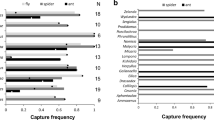Abstract
Darwinian theory predicts that organisms will display traits that benefit themselves rather than other individuals; exceptions to this rule usually are explicable by kin selection. Our studies on an insular population of venomous snakes in north-eastern China reveal a different situation. Only one species of snake (Gloydius shedaoensis, Viperidae) occurs on the island of Shedao, and displays altruism between size (age) classes. First, small snakes frequently kill prey items larger than they can swallow themselves. This behaviour enhances rates of feeding of larger conspecifics, which scavenge the birds' carcasses. Second, large snakes kill raptorial birds (sparrowhawks Accipiter nisus) that pose little or no threat to themselves. This behaviour reduces predation risk for smaller snakes. These effects are presumably accidental consequences of the high venom toxicity of the pit-vipers, which enable them to kill inedible prey and non-threatening predators at little cost. Nonetheless, this ‘accidental altruism’ may have significant ecological consequences. For example, these behaviours may contribute to the remarkably high population densities of snakes on Shedao.
Similar content being viewed by others
References
Auffenberg, W. (1981) The Behavioral Ecology of the Komodo Monitor. University Presses of Florida, Gainesville, Florida.
Bedford, G.S. and Griffiths, A.D. (1995) Road kill predation by the blackheaded python (Aspidites melanocephalus). Herpetofauna 25, 53.
Capula, M., Luiselli, L., Anibaldi, C., Rugiero, L., Evangelisti, F. and Jesus, V.T. (1997) Notes on the food habits of Coluber hippocrepis nigrescens from Pantelleria Island: a snake that feeds on both carrion and living prey. Herpetol. J. 7, 67–70.
Cowles, R.B. and Phelan, R.L. (1958) Olfaction in rattlesnakes. Copeia 1958, 77–83.
Darwin, F. (1887) The Life and Letters of Charles Darwin. John Murray, London.
Dawkins, R. (1976) The Selfish Gene. Oxford University Press, Oxford.
Hamilton, W.D. (1967) Extraordinary sex ratios. Science 156, 477–488.
Herzog, H.A., Bowers, B.B. and Burghardt, G.M. (1989) Stimulus control of antipredator behavior in newborn and juvenile garter snakes (Thamnophis). J. Comp. Psychol. 103, 233–242.
Huang, M. (1989) Studies on Agkistrodon shedaoensis ecology. In M. Matsui, T. Hikida and R.C. Goris (eds) Current Herpetology in East Asia. Herpetological Society of Japan, Kyoto, Japan, pp. 381–383.
Koba, K. (1938) Some notes on Agkistrodon halys from Syoryuzan Island Kwantung South Manchuria. Zool. Mag. Tokyo 50, 245–264.
Li, J-L. (1995) China Snake Island. Liaoning Science and Technology Press, Dalian, People's Republic of China.
Scudder, K.M. and Chiszar, D. (1977) Effects of six visual stimulus conditions on defensive and exploratory behavior in two species of rattlesnakes. Psychol. Rec. 27, 519–526.
Shine, R. and Sun, L. (2001) Arboreal ambush-site selection by pit-vipers (Gloydius shedaoensis). Anim. Behav. 63, 565–576.
Sun, L., Zhao, D. and Tang, Z. (1990) Studies on the appearance rate during the peak of predation of Agkistrodon shedaoensis Zhao (in Chinese, English summary). In E. Zhao (ed) From Water Onto Land. China Forestry Press, Beijing, pp. 281–283.
Sun, L., Shine, R., Zhao, D. and Tang, Z. (2001) Biotic and abiotic influences on activity patterns of insular pit-vipers (Gloydius shedaoensis, Viperidae) from north-eastern China. Biol. Conserv. 97, 387–398.
Sun, L., Shine, R., Zhao, D. and Tang, Z. (2002) Low costs, high output: reproduction in an insular pit-viper (Gloydius shedaoensis, Viperidae) from north-eastern China. J. Zool. (Lond.) 256, 511–521.
Trivers, R.L. (1972) Parental Investment and Sexual Selection. Aldine, Chicago.
Weldon, P.J. and Burghardt, G.M. (1979) The ophiophage defensive response in crotaline snakes: extension to new taxa. J. Chem. Ecol. 5, 141–151.
Weldon, P.J., Ortiz, R. and Sharp, T.R. (1992) The chemical ecology of crotaline snakes. In J.A. Campbell and E.D.J. Brodie (eds) Biology of the Pitvipers Selva, Tyler, Texas, pp. 309–319.
Wharton, C.H. (1969) The cottonmouth moccasin on Sea Horse Key, Florida. Bull. Florida State Mus. Biol. Sci. 14, 227–272.
Williams, G.C. (1966) Adaptation and Natural Selection: A Critique of Some Current Evolutionary Thought. Princeton University Press, New Jersey.
Zhao, E., Wu, G. and Yang, W. (1979) Comparisons of toxicity and neutralization test among Pallas' pit-viper, Snake-Island pit-viper and black eye-brow pit-viper (in Chinese, English summary). Acta Herpetol. Sinica Ser. 1 3, 1–6.
Author information
Authors and Affiliations
Corresponding author
Rights and permissions
About this article
Cite this article
Shine, R., Sun, LX., Fitzgerald, M. et al. Accidental altruism in insular pit-vipers (Gloydius shedaoensis, Viperidae). Evolutionary Ecology 16, 541–548 (2002). https://doi.org/10.1023/A:1021671122848
Issue Date:
DOI: https://doi.org/10.1023/A:1021671122848




